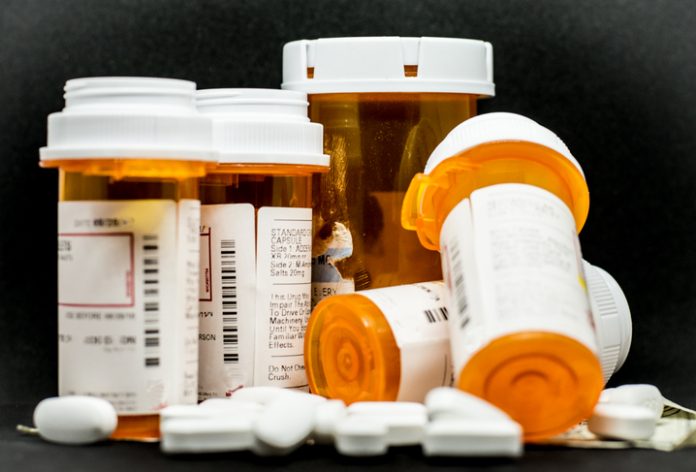The U.S. Department of Justice (DOJ) charged the pharmacy chain Rite Aid filled illegal prescriptions for opioids, on March 13.
Rite Aid drug stores filled “hundreds of thousands” of illegal prescriptions between May 2014 and June 2019, said Associate Attorney General Vanita Gupta in a press release.
“We allege that Rite Aid filled hundreds of thousands of prescriptions that did not meet legal requirements,” said Gupta. “Rite Aid’s pharmacists repeatedly filled prescriptions for controlled substances with obvious red flags, and Rite Aid intentionally deleted internal notes about suspicious prescribers. These practices opened the floodgates for millions of opioid pills and other controlled substances to flow illegally out of Rite Aid’s stores.”
‘Looking for Scapegoats’
The press release describes the prescriptions as having “no legitimate medical purpose,” and as not being issued “in the usual course of professional practice.”
DOJ claims the chain was alerted to the illegal prescriptions by distributors, pharmacists, and its own data, but deleted those notes from its internal system. DOJ says Rite Aid’s actions violated the Controlled Substances Act and, by billing Medicare and Medicaid for the drugs, the False Claims Act.
DOJ is blaming others for the failure of U.S. drug policies, says Jeffrey A. Singer, M.D., a senior fellow at the Cato Institute.
“The DOJ is still looking for scapegoats for the futile and failed war on drugs,” said Singer. “When overdoses in the 1980s and early 1990s were associated with minority or marginalized groups, the drug warriors blamed it on them: they made bad choices. When overdoses grew to include white, middle-class people, they blamed it on pharmaceutical companies, pharmacies, and doctors. Now, they are blaming it on the border. They refuse to put the blame where it belongs: on drug prohibition.”
‘Lure of Easy Money’
Drug users have increasingly turned to riskier street drugs as the federal government doubled down on prohibition, Singer wrote in an analysis published by the Cato Institute on November 29, 2022.
“Doctors, pharmacists, and drug makers did not create a generation of zombie-like drug addicts,” wrote Singer. “There has been a growing population of non-medical drug users—recreationally or otherwise—and when doctors were prescribing opioids more liberally, [those users] preferred to use diverted prescription pain pills, a wiser choice than street drugs. When the sources of prescription pain pills dried up, they moved first to heroin and now to fentanyl.”
Television series like Dopesick paint an unrealistic picture of the illegal drug market, Singer told Health Care News.
“While there were undoubtedly nefarious doctors and pharmacists who used their practices as a cover for drug-dealing operations—aka ‘pill mills’—they were exceptions to the rule,” said Singer. “And they were incentivized to do so by the lure of easy money that the drug prohibition created for them.”
Bonner Russell Cohen, Ph.D. (bcohen@nationalcenter.org) is a senior fellow at the National Center for Public Policy Research.




















